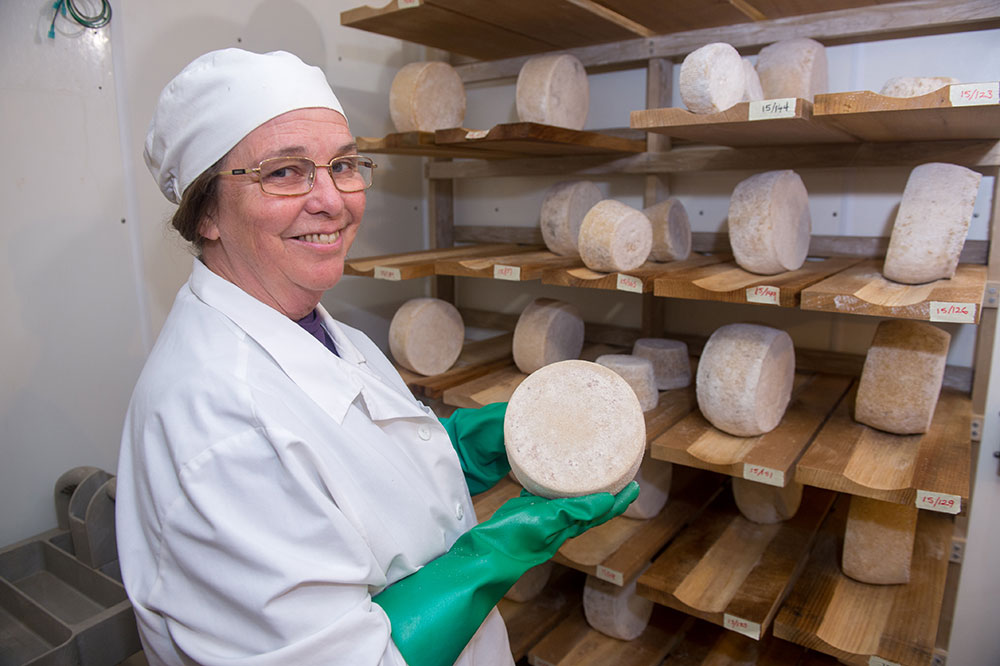Opening the Secrets of Artisanal Cheese Making: A Detailed DIY Overview
In the world of culinary craftsmanship, artisanal cheese making stands as a testimony to the delicate equilibrium in between tradition and innovation. As we begin on this journey to demystify the art of developing elegant cheeses, we are encountered with a tapestry of skills and tricks waiting to be unwinded.
Choosing the Right Milk
When getting started on the trip of artisanal cheese production, the option of milk plays an important function in identifying the high quality and qualities of the end product. The kind of milk chosen affects the taste, structure, and on the whole account of celebrity. Raw milk, straight from the pet, is chosen by numerous artisanal cheesemakers as a result of its one-of-a-kind blend of enzymes, bacteria, and taste substances. Utilizing raw milk comes with guidelines and risks, making sterilized milk a much safer alternative for novices.
When selecting milk for cheese production, it is very important to consider the fat web content. Greater fat material in milk can result in a creamier and richer cheese, while lower fat web content might cause a drier and stronger structure. Additionally, the resource of the milk, whether from cows, goats, sheep, or buffalo, adds unique flavors and attributes to the cheese (Melbourne Made Cheese). Each kind of milk brings its very own subtleties, enabling for a wide variety of cheese varieties to be crafted based on the chosen milk. Ultimately, the choice of milk is a basic decision that establishes the foundation for a successful artisanal cheese-making endeavor.
Culturing and Coagulating
To start the cheese-making process, the crucial steps of culturing and coagulating have to be carefully executed to transform milk into curds and whey. Culturing includes introducing advantageous microorganisms to the milk, which after that begins the fermentation process. These bacteria convert lactose (milk sugar) into lactic acid, producing the acidic atmosphere needed for coagulation. The kind of society utilized can considerably affect the taste, texture, and ripening of the last cheese item.

The timing and temperature level control throughout culturing and coagulation are important variables that affect the final end result of the cheese. Proper execution of these actions is vital to make certain the preferred appearance, taste, and uniformity of the artisanal cheese being created.
Draining and Pressing Curds
After the milk healthy proteins have coagulated and the curds have actually been cut to release whey, the following vital action in artisanal cheese making involves draining pipes and pushing the curds to achieve the wanted structure and consistency of the last cheese product. The time for draining can vary depending on the kind of cheese being made and the preferred wetness material.
As soon as the curds have actually sufficiently drained, the following action is pressing. Pressing aids eliminate any kind of staying whey and compacts the curds to create a solid cheese wheel. Pushing can be done making use redirected here of specialized cheese presses that use constant and mild pressure over an amount of time. The period and pressure used during pressing will certainly influence the last structure of celebrity, from soft and creamy to difficult and company. Appropriate pressing and draining pipes are essential steps that dramatically affect the top quality and features of the artisanal cheese being produced.
Aging and Flavoring Methods
Implementing meticulous aging and flavor methods is crucial in improving the deepness and intricacy of artisanal cheeses, elevating their taste accounts to splendid levels of improvement and elegance. Aging plays an essential function in developing the distinct flavors and textures that identify artisanal cheeses.
Flavoring strategies additionally contribute dramatically to the final preference of artisanal cheeses. Cheesemakers might choose to introduce additional flavors by integrating components such as herbs, seasonings, and even fruits right into the cheese throughout the production procedure. In addition, some cheeses are washed or scrubed with numerous fluids, such as brine or alcohol, to boost their textures and flavors.
Covering and Storing Cheeses

Conclusion
In conclusion, grasping the art of artisanal cheese making includes meticulously selecting the ideal milk, complying with accurate culturing and coagulating procedures, draining pipes and pressing curds efficiently, visit this site right here and making use of various aging and flavor strategies. Remember to wrap and keep your cheeses properly to make certain ideal taste and texture development.
Each kind of milk brings its very own subtleties, allowing for a broad variety of cheese selections to be crafted based on the selected milk.After the milk proteins have actually coagulated and the curds have actually been cut to release whey, the next important find more info action in artisanal cheese making includes draining pipes and pressing the curds to achieve the desired structure and consistency of the final cheese item. Many cheeses need to be covered in wax paper or cheese paper to allow them to breathe while securing them from drying out. For cheeses that need to proceed aging, such as bloomy peels or washed skins, guarantee they are stored in a trendy setting like a cheese cavern or a fridge set to the proper temperature. By paying focus to the covering and storage of artisanal cheeses, cheese makers and fanatics can protect the honesty of these specials and completely appreciate their complicated tastes.